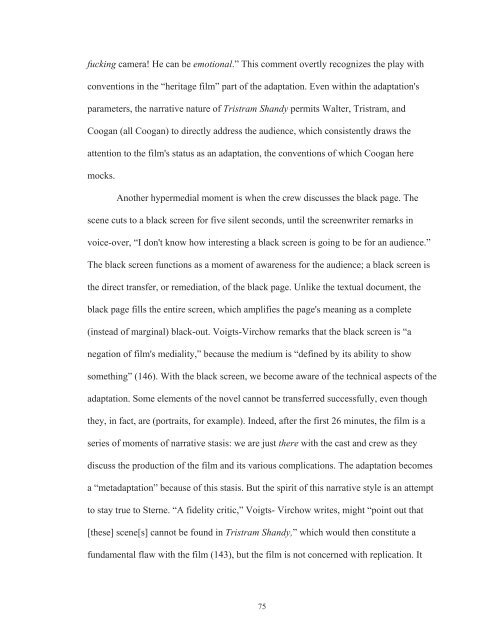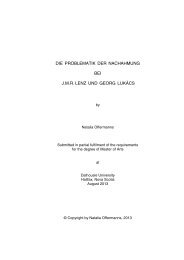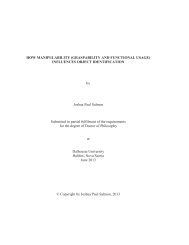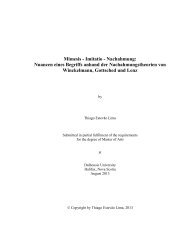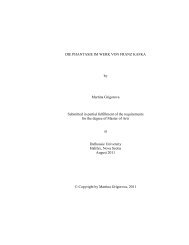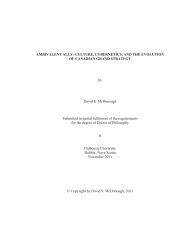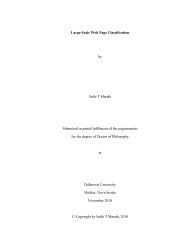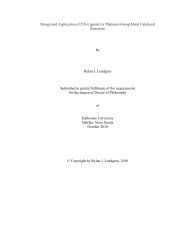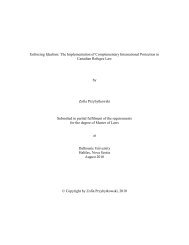ADAPTING TRISTRAM SHANDY by Adria Young Submitted in ...
ADAPTING TRISTRAM SHANDY by Adria Young Submitted in ...
ADAPTING TRISTRAM SHANDY by Adria Young Submitted in ...
You also want an ePaper? Increase the reach of your titles
YUMPU automatically turns print PDFs into web optimized ePapers that Google loves.
fuck<strong>in</strong>g camera! He can be emotional.” This comment overtly recognizes the play with<br />
conventions <strong>in</strong> the “heritage film” part of the adaptation. Even with<strong>in</strong> the adaptation's<br />
parameters, the narrative nature of Tristram Shandy permits Walter, Tristram, and<br />
Coogan (all Coogan) to directly address the audience, which consistently draws the<br />
attention to the film's status as an adaptation, the conventions of which Coogan here<br />
mocks.<br />
Another hypermedial moment is when the crew discusses the black page. The<br />
scene cuts to a black screen for five silent seconds, until the screenwriter remarks <strong>in</strong><br />
voice-over, “I don't know how <strong>in</strong>terest<strong>in</strong>g a black screen is go<strong>in</strong>g to be for an audience.”<br />
The black screen functions as a moment of awareness for the audience; a black screen is<br />
the direct transfer, or remediation, of the black page. Unlike the textual document, the<br />
black page fills the entire screen, which amplifies the page's mean<strong>in</strong>g as a complete<br />
(<strong>in</strong>stead of marg<strong>in</strong>al) black-out. Voigts-Virchow remarks that the black screen is “a<br />
negation of film's mediality,” because the medium is “def<strong>in</strong>ed <strong>by</strong> its ability to show<br />
someth<strong>in</strong>g” (146). With the black screen, we become aware of the technical aspects of the<br />
adaptation. Some elements of the novel cannot be transferred successfully, even though<br />
they, <strong>in</strong> fact, are (portraits, for example). Indeed, after the first 26 m<strong>in</strong>utes, the film is a<br />
series of moments of narrative stasis: we are just there with the cast and crew as they<br />
discuss the production of the film and its various complications. The adaptation becomes<br />
a “metadaptation” because of this stasis. But the spirit of this narrative style is an attempt<br />
to stay true to Sterne. “A fidelity critic,” Voigts- Virchow writes, might “po<strong>in</strong>t out that<br />
[these] scene[s] cannot be found <strong>in</strong> Tristram Shandy,” which would then constitute a<br />
fundamental flaw with the film (143), but the film is not concerned with replication. It<br />
75


